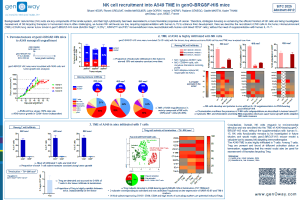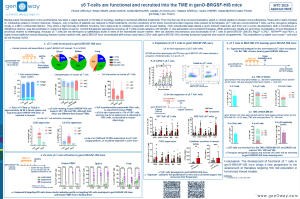The genO‑BRGSF‑HIS mouse possesses the most functional reconstituted human immune system currently available on the market. Indeed, this mouse, based on the cutting edge genO-BRGSF model, offers new opportunities to address human-specific questions in a more relevant manner, facilitating translational research in several biomedical disciplines and approaches.
Applications of the genO‑BRGSF‑HIS mouse model
The genO‑BRGSF‑HIS mouse model can address a broad spectrum of therapeutic areas and applications, including bispecific antibodies, immuno-oncology, infectiology, vaccines, drug screening, and personalized medicine.
- Application in tumor biology:
- Assessment of myeloid and lymphoid human cells recruitment and activation profile into the tumor microenvironment (TME) shaped by tumor cell type and tumor burden
- Application in efficacy assessment of:
- T-cell engagers
- Myeloid-targeted therapies aiming at reprogramming the TME
- Depleting agents working via ADCP and ADCC
- γδ T-cell expanders, as the model has shown to develop different subsets of γδ T cells
- Application in safety assessment of:
- Anti-CD3 OKT3 antibody which targets the lymphoid and/or myeloid compartments, demonstrating the development of the hallmark features of cytokine release syndrome, as well as CRS-associated features induced by T-cell or myeloid targeting agents. The OKT3-induced CRS features could be alleviated by Infliximab
- Anti-VISTA pH-selective antibody, showing the safety of SNS-101 therapeutic antibody
Clients




.png)

































.webp)





















